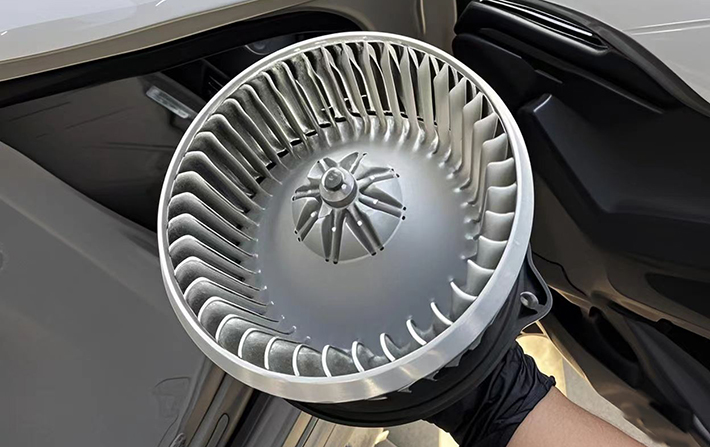Why Does a Car Blower Motor Make Noise or Stop Working, and How to Fix It?
2025-05-08
The car blower motor (AC fan) is a critical component of the vehicle’s HVAC system, responsible for circulating hot or cold air into the cabin. If the blower motor produces abnormal noises, rattling, or stops working entirely, it not only compromises comfort but may also indicate potential safety risks. This article explores common causes of these issues and provides actionable solutions.

I. Common Causes of Blower Motor Noise and Fixes
Debris in the Air Duct
Cause: Leaves, dirt, or small objects entering the blower through the HVAC intake (usually during outdoor air circulation).
Symptoms: Irregular scraping, clicking, or knocking noises during operation.
Solutions:
1. Remove the blower motor (typically located behind the glove compartment) and clean out debris.
2. Install or replace the cabin air filter to prevent future blockages.
Worn Bearings or Lack of Lubrication
Cause: Long-term use degrades bearings or dries out lubricant, causing friction.
Symptoms: Constant high-pitched "humming" or "squealing," worsening at higher speeds.
Solutions:
1. Disassemble the motor, clean bearings, and apply high-temperature grease.
2. Replace the entire blower motor if bearings are severely worn.
Bent or Broken Fan Blades
Cause: Physical damage from debris or vibration over time.
Symptoms: Visible wobbling, shaking, or loud irregular noises.
Solutions:
1. Inspect blades for minor bends (gentle reshaping may help).
2. Replace damaged blades or the entire blower assembly.
Motor Aging or Worn Carbon Brushes
Cause: Worn carbon brushes, rotor contact issues, or degraded motor windings.
Symptoms: Intermittent operation, speed fluctuations, or grinding noises.
Solutions: Replace the blower motor (carbon brushes are often non-serviceable).
II. Why the Blower Motor Stops Working: Diagnosis & Fixes
Electrical Issues
Cause: Blown fuse, loose wiring, or corroded connectors.
Diagnosis:
1. Check the blower motor fuse (usually 15–30A) in the fuse box.
2. Use a multimeter to test power supply to the motor.
3. Ensure connectors are clean and securely plugged in.
Burned-Out Motor
Cause: Overheating due to prolonged use, water damage, or voltage spikes.
Test: Directly power the motor (disconnected from the vehicle) to check functionality.
Solution: Replace the motor.
Faulty Blower Motor Resistor
Cause: A damaged resistor (speed controller) disrupts fan speed regulation.
Symptoms: Fan works only on high speed or not at all.
Solution: Replace the resistor (often located near the blower housing).
HVAC Control Panel Failure
Cause: Faulty switches, relays, or internal circuitry in the control panel.
Diagnosis: Use an OBD scanner to check HVAC signals or bypass the panel to test the motor.
Solution: Repair or replace the control panel.
III. Maintenance Tips
1. Clean the HVAC System Annually: Replace cabin air filters to reduce dust buildup.
2. Avoid Moisture Exposure: Dry the system after car washes or driving in heavy rain.
3. Limit High-Speed Overuse: Prolonged use on maximum speed accelerates motor wear.
IV. When to Seek Professional Help?
1.If DIY troubleshooting fails, consult a certified technician.
2.Complex electrical repairs or dashboard disassembly (e.g., replacing the evaporator) require specialized tools.
Summary
Blower motor noise or failure often stems from debris, worn components, or electrical faults. Start by checking fuses, wiring, resistors, and the motor itself. Simple issues like clogged filters or loose connectors can often be fixed at home. However, for advanced electrical problems or internal motor damage, professional assistance ensures safety and system reliability.